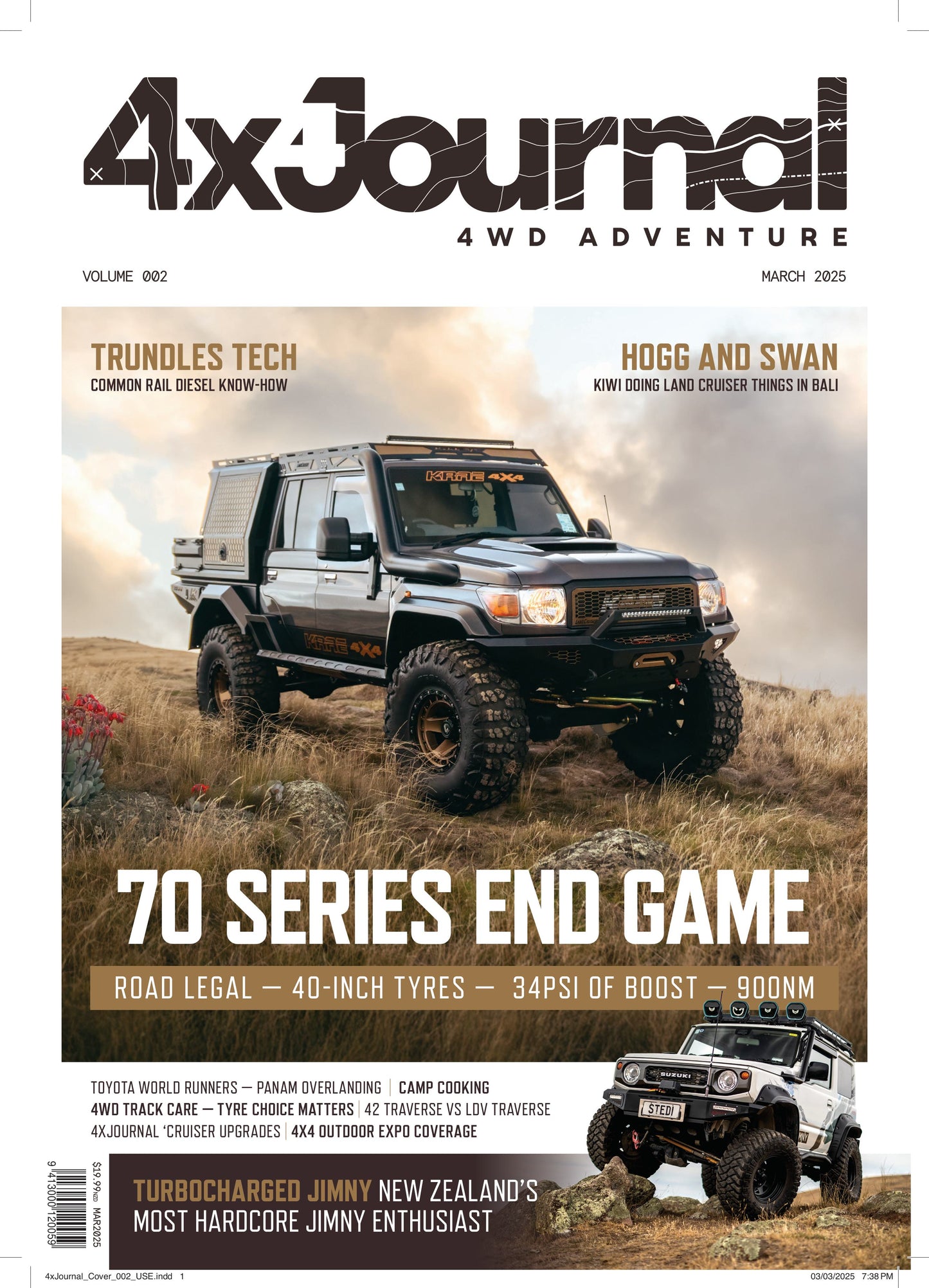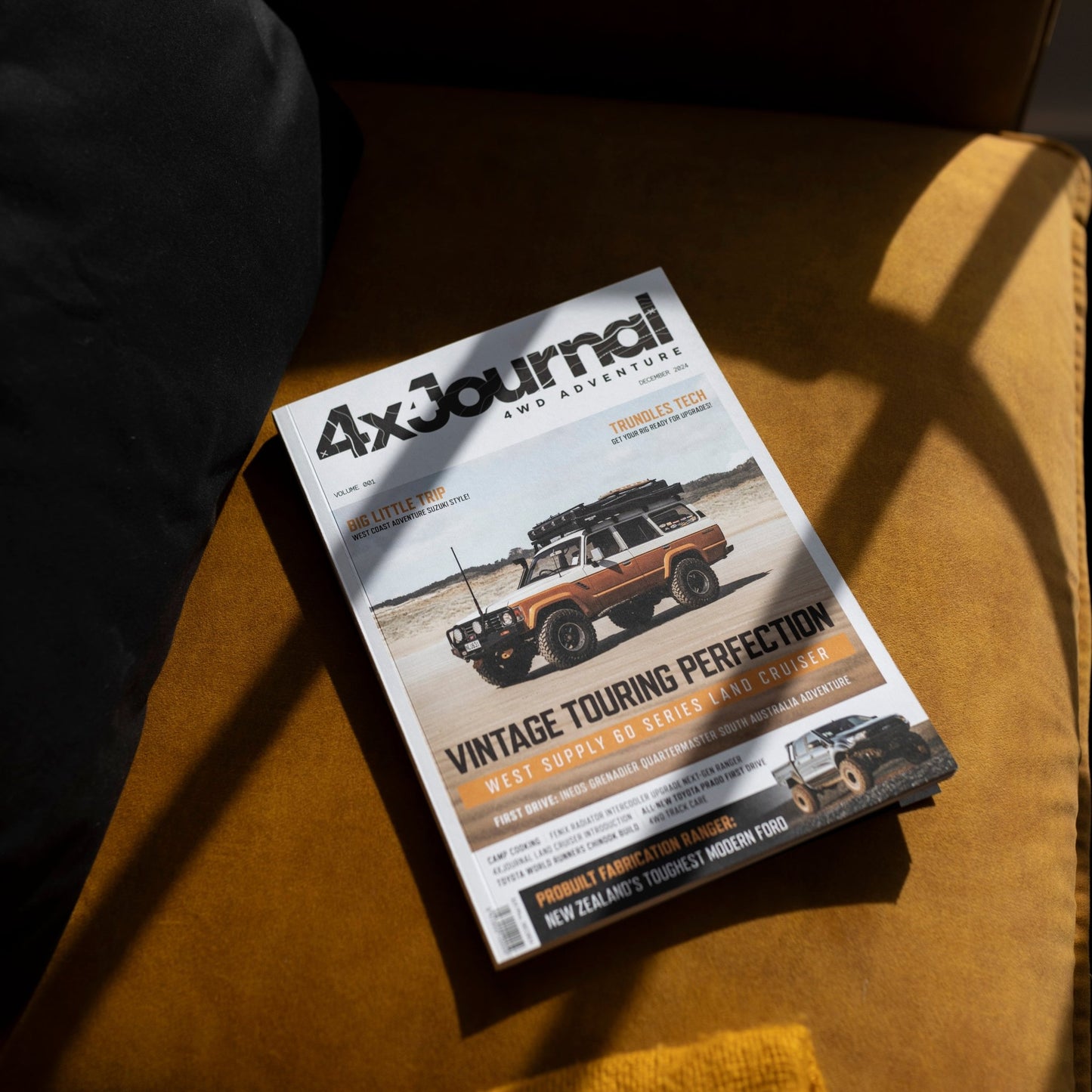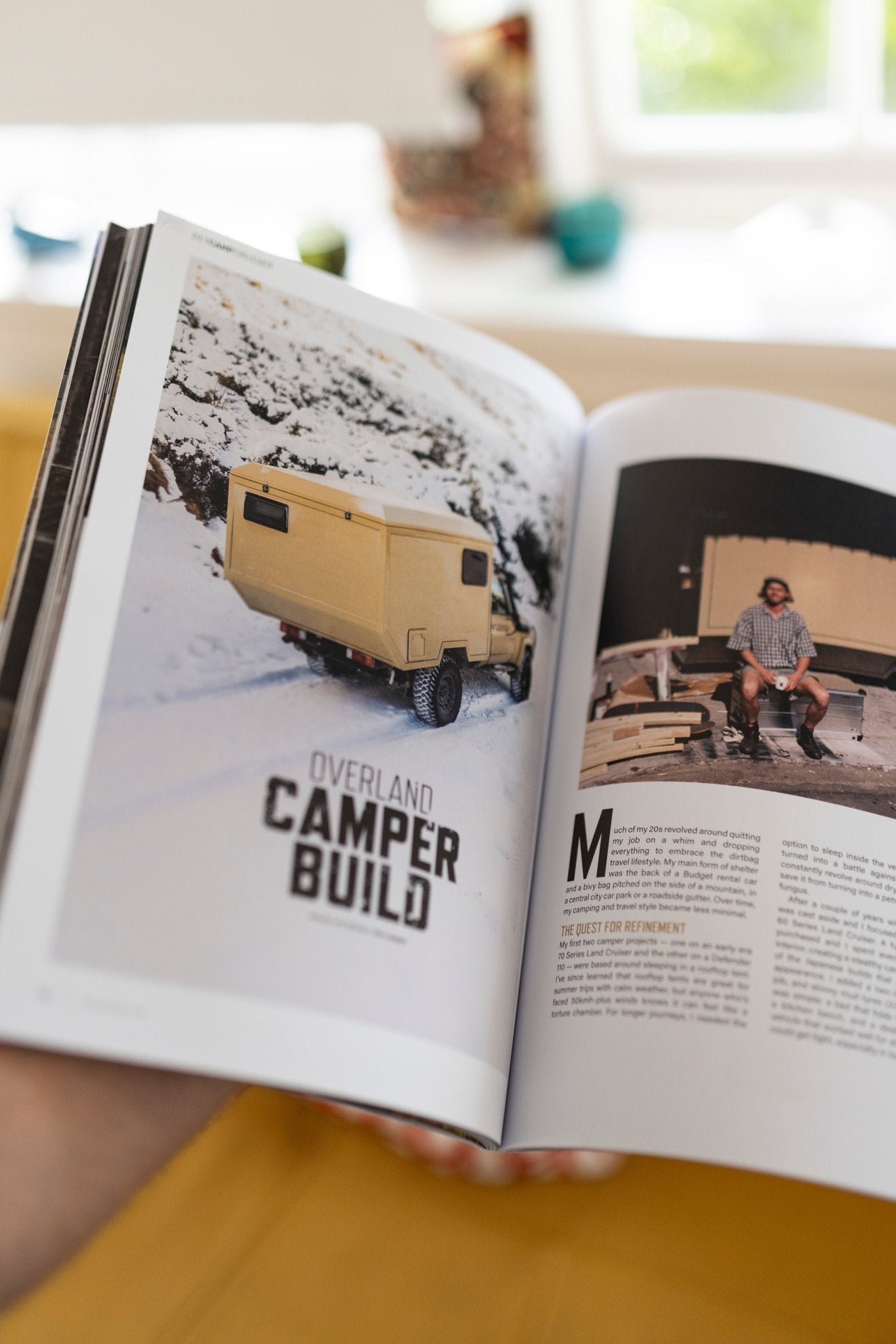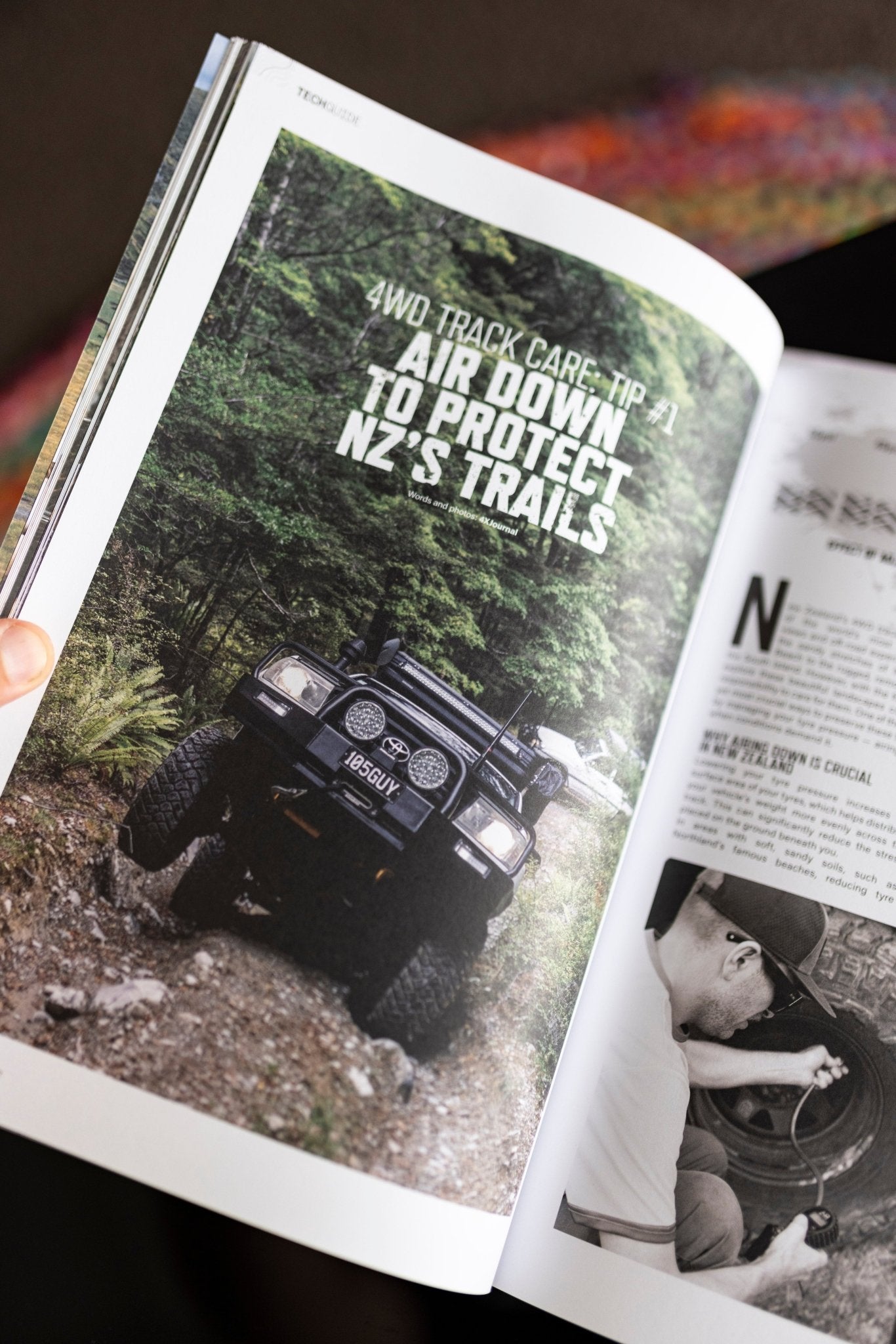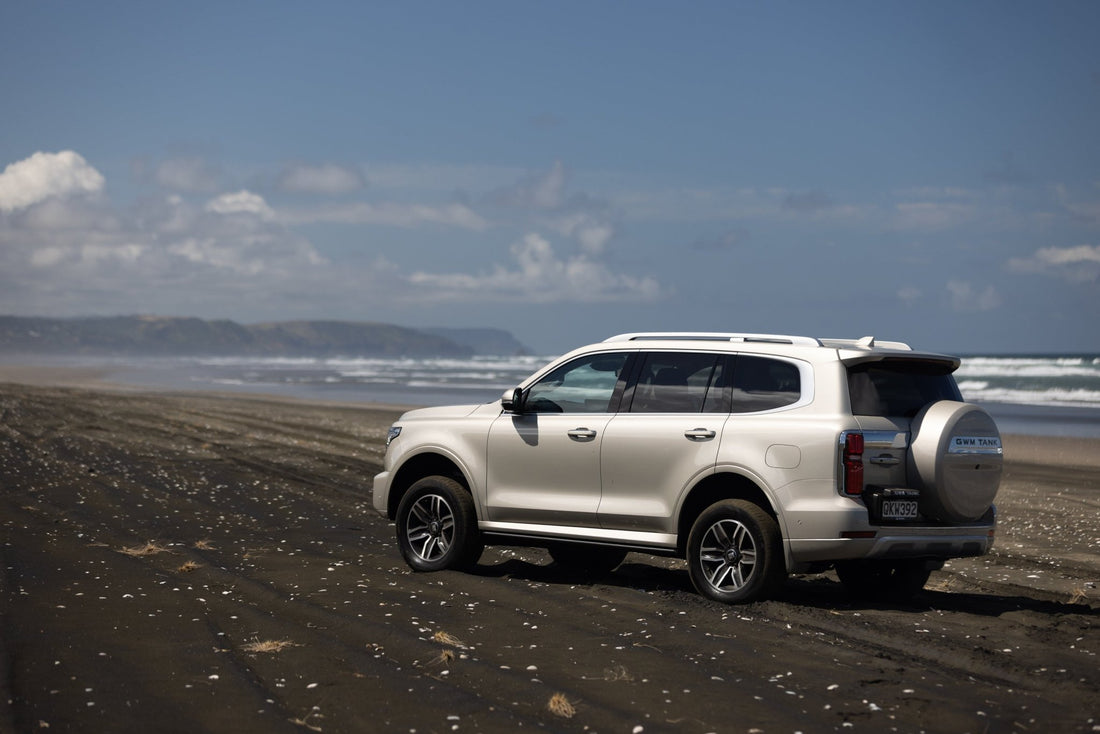
The GWM Tank 500 — Kiwis, We Have a Contender
Share
I’m a huge fan of anything considered an underdog, and you could argue that, at the moment, most Chinese-manufactured vehicles are considered just that in New Zealand. Some exceed expectations, and some fall short, and for those that do fall short, people are quick to say, ‘Well, for the money, it’s not bad.’ It’s hard to look at these vehicles objectively due to the price point, but GWM does have Prado owners in their sights. Having spent a good amount of time in the Prado since its launch, I wanted to see if it truly is a contender against the GWM Tank 500.

Unfortunately, the GWM Tank 500 does suffer from those pesky driving ‘aids,’ just like the GWM Tank 300, but again, they’re easily turned off before you hit the road. When I collected the GWM Tank 500, it was an incredibly hot and humid afternoon in Auckland, and I was stoked to see seat coolers (or fans) equipped in this particular spec. The air-conditioning fans have a serious amount of grunt. At first glance, I couldn’t believe just how fancy the interior is—it feels as though you’re in an AMG Mercedes, with ambient lighting everywhere and a gigantic centre screen for entertainment.

Wow, it’s smooth—one of the first things I noticed driving the Tank 500 home that afternoon was just how smooth and quiet it is on the highway. I haven’t driven anything quite like this in some time (for the price point and slightly over). Compared with the Prado, the Tank 500 is smoother and quieter on the road, with a more ‘premium’ feel. The GWM Tank 500 is powered by a 2000cc turbocharged four-cylinder hybrid engine that, combined, produces 255kW of total power and 648Nm of torque. Much like the Tank 300, it doesn’t feel ‘torquey’ until your foot is to the floor and both power systems are working together. How this would be for towing would be interesting to see—with no actual low-down engine torque, I’d imagine it would need to be working fairly hard all the time.

Compared to the Tank 300, the Tank 500 does feel much larger. There’s more body roll and a general sense of the mass the vehicle carries. After all, those heated and cooled seats and other features the Tank 500 has onboard all add to the overall vehicle weight of 2605kg—495kg heavier than the smaller Tank 300. Surprisingly, though, it can sprint to 100kph in 8.3 seconds but feels nowhere near as eager as the Tank 300, which genuinely felt rapid with the same powertrain.

All of this boring on-road stuff aside, I wanted to get the GWM Tank 500 onto some more challenging terrain. In Auckland, the easiest and most accessible way to do this is to head to Muriwai Beach, where traction is immediately compromised. I brought along some recovery boards, my quick deflators, and a dual-pump compressor so we could air down and back up as quickly as possible. You don’t need to air down to get onto Muriwai, but it is better for the entry road, causing less damage.
 Inside the vehicle’s Offroad Homepage, there’s a ‘Sand’ mode. With this mode engaged, it recommended I drop tyre pressure to one bar (14.7psi), so we gave that a try. With the rear and centre diff-locks engaged, it cruised onto the beach easily. We did this exact entry road in an N70 Hilux the week prior, which required a heap more wheel work (with fewer driving aids).
Inside the vehicle’s Offroad Homepage, there’s a ‘Sand’ mode. With this mode engaged, it recommended I drop tyre pressure to one bar (14.7psi), so we gave that a try. With the rear and centre diff-locks engaged, it cruised onto the beach easily. We did this exact entry road in an N70 Hilux the week prior, which required a heap more wheel work (with fewer driving aids).
On the beach in Sand mode, the Tank 500 felt right at home. I tried getting it stuck in looser, softer sand, and it crawled out with the traction control mitigating wheel spin. I even put it into ‘Drift’ mode, eliminating the front axles, and it was only at this point that I could get it stuck. Back into four-wheel drive, and it crawled out of that situation too. That smooth ride comfort felt on the highway translated here as well. At the posted Muriwai Beach speed limit, the Tank 500 glided along comfortably.

In the Offroad Homepage, there’s another function called ‘Conqueror Perspective,’ where cameras around the vehicle paint a picture of what’s in front of, around, and under the vehicle—a seriously helpful function for off-roading in rocky terrain. It didn’t help me on the beach, but cool nonetheless. I feel as though some of the ‘modes’ got lost in translation. For example, the ‘Offroad Racing’ mode and the ‘Drift’ mode—why do these exist? I feel as though these functions would be lost on the average consumer considering this vehicle, and at what expense to GWM?
Being on the beach did bring me to another thought—what’s the underseal like? With other Chinese manufacturers suffering from backlash online regarding poor underseal (with some reports of rusty undercarriages in near-new vehicles), what is the GWM’s undercarriage like in terms of rust prevention? Us Kiwis love our fishing, boat launching, and getting these vehicles out in the environment, not to mention most of us live close to the ocean. I guess, like a few of these new vehicles on the market, time will tell.
After a couple of hours of photographing and driving the GWM Tank 500 on the beach, we were more than impressed with its drivability and performance in that environment. With more time or another opportunity, we’d love to get it through some river crossings and onto some rocky, steeper terrain to see how it would handle it. Getting off Muriwai Beach does require a bit of finesse—we prefer a straight-line approach up the middle with a bit of pace, and once we’re on the entry/exit road, we glide over to the left to avoid anything oncoming. Once off, we aired the tyres back up to road pressures and made our way home.
The Tank 500’s battery is slightly intimidating to hook a compressor onto, with an entire block of bus bars and fuses hanging off the positive terminal—but it can be done easily if you know where you’re looking. We were asked a lot during our time with the Tank 500 by 4WD enthusiasts what it’s like. Look, we’re genuinely impressed with it. It’s a great-driving vehicle that has more features than some European vehicles we’ve been in lately. I think, as a family vehicle that would take the family on adventures, with some off the beaten track, there’s nothing comfier and as capable for the price point. It even had us considering life, thinking about what it would look like on 35-inch Maxxis RAZRs. But what’s it lacking?
To me, durability is still a big question mark, and until the GWM platform has been proven over time and distance off the beaten track, we wouldn’t consider one as an option for an off-road build. With a Prado, you know the switchgear, differentials, axles, and so forth are going to at least manage 300,000kms of hard use (we aren’t quite as confident with their hybrid system, though!).

For a family vehicle that’s used for road-tripping around New Zealand in comfort, then absolutely, we’d consider it. It looks great (maybe besides the front grille) and would look even better with a few basic upgrades. It’s economical, powerful, and luxurious—all great family vehicle traits. If we had to choose a powertrain for the GWM Tank 500, though, we’d choose a 3000cc-plus diesel engine (preferably a six-cylinder) so it felt more like a four-wheel drive than an SUV (think Land Cruiser 300 Series)—but that’s just us.

But for $79,990+ORC for a fully equipped, triple-locked luxury four-wheel drive that is more capable than most would do with it? Well done, GWM, well done—it gets a big tick from us!

